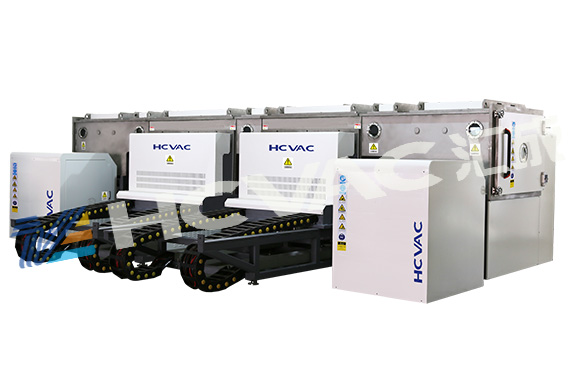In recent years, the plastic plating of PVD coating machine has been widely used in the decorative plating of plastic parts. ABS plastic is the most widely used plastic plating in PVD coating machine. ABS plastic is a terpolymer of acrylonitrile (A), butadiene (B) and styrene (S). For the electroplating-grade ABS plastic of vacuum coating machine, the content of butadiene has a great influence on electroplating, and should generally be controlled at 18% to 23%. High butadiene content, good fluidity, easy to shape, and good adhesion to the coating. Since ABS is a non-conductor, a conductive layer must be attached before the vacuum coating machine is electroplated. The formation of the conductive layer has to go through several steps such as roughening, neutralization, sensitization, activation, electroless plating, etc., which is more complicated than metal electroplating and is prone to problems in production. We started from the process of plastic electroplating in the PVD coating machine, analyzed the reasons and found a solution.

1 The plated parts are easy to float, and the place in contact with the hanger is easy to be burnt. Because the specific gravity of plastic is small, it is easy to float in the solution. The shape of the lampshade is like a small plate, the inner surface is recessed, and there are two small holes on the side. At first, only a copper wire is used to clamp the two small holes for electroplating. Due to the release of gas in electroplating, the lampshade is easy to separate from the copper wire, and the copper wire is also light, not enough to make the lampshade immersed in the solution. Later, a heavy object was attached to the copper wire to solve the floating problem. The contact point between the copper wire and the lampshade is scorched and the plastic is exposed, which is caused by poor conductivity. In order to solve the problem of workpiece floating and conductivity, we designed a special fixture. The clip has a certain weight and no longer floats after the lampshade is put on, and then two wider conductive sheets are used to clamp the hole of the lampshade to make the current everywhere even, and the contact points will not be burnt.
2 Bubbles appear during chemical copper plating of the lampshade, and the bubbles become larger after electroplating, and the process flow of plastic electroplating of the PVD coating machine can be lifted: degreasing → washing → coarsening → washing → sensitization → tap water washing → deionized water washing → activation →Water washing→Chemical copper plating→Water washing→Plating→Water washing→drying. Under our guidance, the raw materials to be injection molded are dried at 80°C for 2 to 4 hours, and then injection molded after being inspected to meet the plating requirements of
PVD coating machine. The bubbling problem after electroplating of the improved lampshade no longer occurs.



